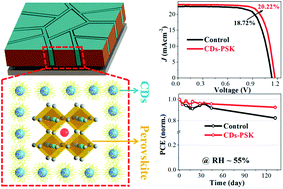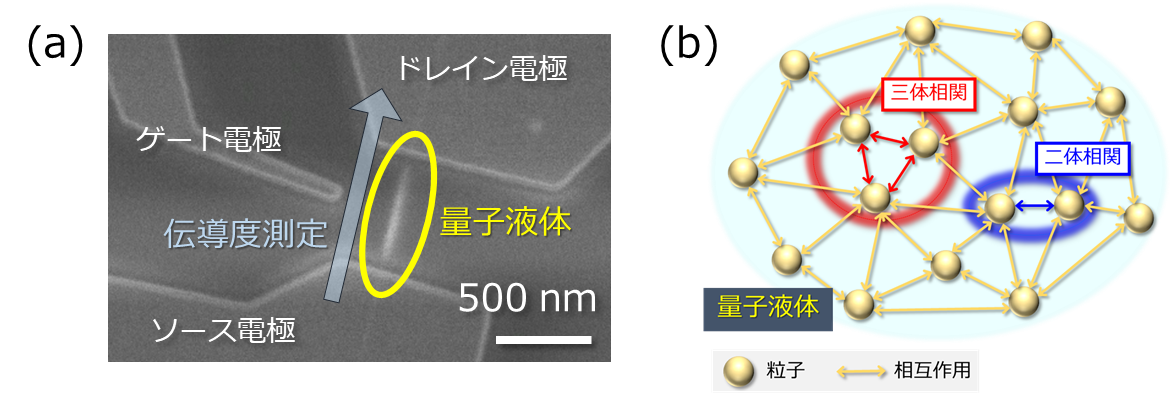2021/4/8 オーストラリア連邦・クィーンズランド工科大学(QUT)
・ QUT が、人間の毛髪から作製したカーボンナノドットを使用してペロブスカイト太陽電池性能を向上させる技術を開発。
・ 商用のシリコン太陽電池に匹敵するエネルギー変換効率の可能性が見込まれ、製造が容易な化合物で作製できるペロブスカイト太陽電池では、フレキシブルな電源等のアプリケーションが期待されているが、製造技術の低コスト化とデバイスの安定性向上が課題となっている。
・ 同大学では過去の研究において、毛髪分解処理後に 240℃での燃焼で作製したカーボンナノドットを次世代スマートデバイスのフレキシブルディスプレイに転換する技術を実証している。
・ 今回の研究でカーボンナノドットの溶液をペロブスカイト太陽電池製造プロセスに添加したところ、カーボンナノドットがペロブスカイト結晶を囲んで波型のペロブスカイト層を形成したことを発見。
・ 湿気や他の有害な環境要因からペロブスカイトを保護する役割を担うこのようなカーボンナノドットで保護されたペロブスカイト太陽電池では、20.22%のエネルギー変換効率を達成。また、安定性も向上した。
・ ペロブスカイト太陽電池の商業利用実現には、エネルギー変換効率の高い安定した大面積のパネルを低コストで提供する必要がある。そのためには、大規模製造および産業標準の条件下における材料特性の深い理解が不可欠と考える。
・ 国際宇宙ステーション(ISS)では、最大 120kW を発電できる 4 枚の太陽光パネルがエネルギーを供給しているが、ISS までのペイロードの重量が不利な点。軽量なペロブスカイト太陽電池はその点で有利だが、宇宙空間における極度の放射線や極端な温度差への耐久性が課題の一つ。
・ 同大学では現在、電子ビームの強力な照射や極端な温度変化等の過酷な条件下でのペロブスカイト材料特性の研究を進めている。
URL: https://www.qut.edu.au/news?id=175051
<NEDO海外技術情報より>
(関連情報)
Journal of Materials Chemistry A 掲載論文(アブストラクトのみ:全文は有料)
Self-assembled carbon dot-wrapped perovskites enable light trapping and defect passivation for
efficient and stable perovskite solar cells
URL: https://pubs.rsc.org/en/content/articlelanding/2021/TA/D1TA00036E#!divAbstract
Abstract
Simultaneously improving photovoltaic performance and longevity has become the main focus towards the commercialization of metal halide perovskite solar technology. Herein, we demonstrate resilient, high-efficiency triple-cation perovskite solar cells (PSCs) by incorporating carbon dots (CDs) derived from human hair into the perovskite film synthesis. It is found that a toluene-based antisolvent containing CDs results in the formation of a bilayer structure where a wave-like textured top perovskite layer is assembled on the bottom dense perovskite counterpart, enabling reduced optical losses through light trapping. Further characterization has revealed that the CDs are formed around and over the surface of perovskite crystals, serving as a full armour to preserve the perovskite stoichiometry during the crystallization and operation. Accordingly, the CD-wrapped perovskite film demonstrates a reduced density of interfacial defects including metallic lead clusters and uncoordinated halide vacancies, improved carrier recombination lifetime, better energy alignment with the adjacent hole transport layer, and enhanced hydrophobicity. By leveraging these advantages to enhance the efficiency of PSCs, we have achieved a maximum power conversion efficiency of 20.22%, higher than 18.72% for PSCs without CDs, and the device stability is also significantly enhanced.




